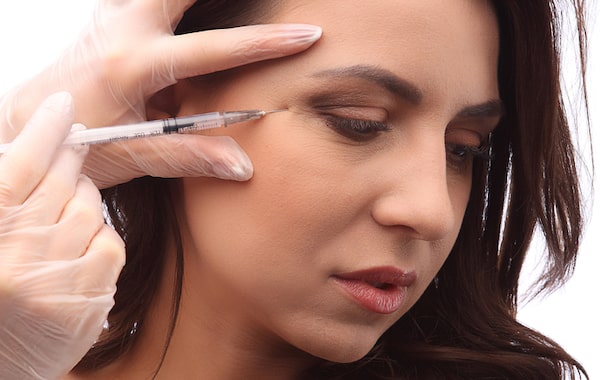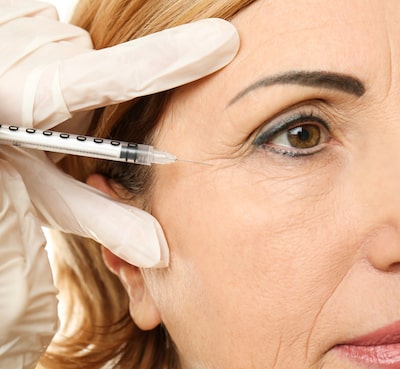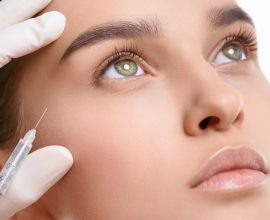Botox Side Effects Explained
Botox is a drug that weakens or paralyzes muscles in the treated area to prevent muscle contractions from occurring. When used in small doses, it can help to reduce skin wrinkles that give a person an older look. As a cosmetic treatment, Botox injections can give a person a younger and smoother look to the face. In addition, the Food and Drug Administration (FDA) has approved it as a treatment for various health issues including eyelid spasms, excessive sweating, some bladder disorders and migraines. The cosmetic use of Botox has become quite popular over the years but it comes with some side effects that should be noted when considering undergoing the procedure.

Botox Side Effects Examined
- Headaches are a potential side effect of undergoing a Botox treatment. In clinical trials, it was discovered that headaches were more common among people that used Botox to treat chronic migraines, involuntary tightening of the neck muscles and excessive underarm sweating. If you have headaches that concern you while taking Botox, it is recommended that you talk to your doctor. Doctors can recommend ways for you to manage this side effect or they can suggest trying another medication for your condition.
- Urinary retention is another possible side effect of Botox injections. Urinary retention is when you have trouble completely emptying your bladder. This issue can cause symptoms such as trouble urinating, a burning sensation while urinating and a frequent urge to urinate. Urinary retention was found to be more common in people taking Botox to treat an overactive bladder and urinary incontinence when caused by a neurological disorder. Those that take Botox for these conditions may be at a higher risk for urinary retention. Your doctor will monitor how much you urinate within a couple weeks of starting your Botox treatment in order to specifically to check for urinary retention. Botox should only be used to treat bladder problems in people who are able to have a catheter inserted. A catheter is used temporarily to help empty your bladder until all signs of urinary retention are gone. Before taking Botox for bladder problems, make sure you tell your doctor that you are already experiencing some urinary retention. If this is an issue relevant to you, you may not be an ideal candidate to use Botox.
- Another common side effect of Botox is an upper respiratory tract infection which is one similar to the common cold. When taking Botox, this type of infection is usually mild. Symptoms of an upper respiratory tract infection will include coughing, feeling some pressure behind your face, a runny nose, a scratchy or sore throat and sneezing. This side effect was seen to be more common among people taking Botox to treat the involuntary tightening of neck muscles and involuntary muscle spasms. Call your doctor if you are experiencing symptoms of an upper respiratory tract infection. While it isn’t likely that you’ll need to stop taking Botox due to this side effect, they will be able to recommend ways to treat it.
- Injection site reactions can develop regardless of the condition you are taking Botox to treat. Injection site reactions are typically mild and will not last more than several days. Symptoms may develop from a few hours up to a few days after an injection and can include pain, tenderness and redness, showing signs of bruising and slight bleeding. If you’re experiencing an injection site reaction that is severe or bothers you, talk with your doctor about treatments other than Botox that may be better for you.
Botox – Boxed Warning
 Botox has a boxed warning for the toxin effects of the drug that tend to spread away from the injection site. As with anything, a boxed warning is the most serious warning that can be addressed by the FDA and alerts both doctors and patients about drug effects that may be dangerous. If Botox spreads away from the injection site to goes to other parts of the body, this is a condition known as botulism. This condition can occur hours, days, or even weeks after being given a Botox injection. Symptoms may include fatigue, trouble breathing, trouble speaking, trouble swallowing, drooping eyelids, double vision and loss of control over your bladder and muscle weakness. In rare cases, botulism can cause trouble breathing or swallowing that can prove to be life threatening. If you think your symptoms may be life threatening, immediately call 911 or your local emergency number.
Botox has a boxed warning for the toxin effects of the drug that tend to spread away from the injection site. As with anything, a boxed warning is the most serious warning that can be addressed by the FDA and alerts both doctors and patients about drug effects that may be dangerous. If Botox spreads away from the injection site to goes to other parts of the body, this is a condition known as botulism. This condition can occur hours, days, or even weeks after being given a Botox injection. Symptoms may include fatigue, trouble breathing, trouble speaking, trouble swallowing, drooping eyelids, double vision and loss of control over your bladder and muscle weakness. In rare cases, botulism can cause trouble breathing or swallowing that can prove to be life threatening. If you think your symptoms may be life threatening, immediately call 911 or your local emergency number.
Botox is popular thanks to its ability to provide a more youthful and refreshed look to the face. If you are interested in having Botox, schedule a consultation appointment with a medical provider who can walk you through the procedure and give you the pros and cons of having the treatment. If you are not sure if Botox is the best option for you, the medical provider should be able to answer any and all questions you have about the treatment.
– JM



